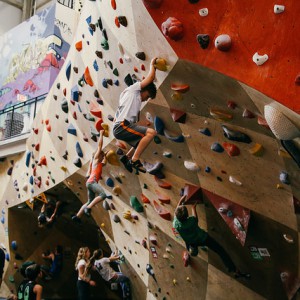What is it about the cold months in Park Slope that make Brooklyn stand out like a Charles Dickens village? With all the chaos and commotion of our city, our world and our speck in the universe, it is Brooklyn that remains unchanged. Even with new renovations, new neighbors, new schools, hospitals and restaurants, the true heart of winter lives and thrives on the streets of Brooklyn. Some of this has to do with the deep roots of our borough, the history of Park Slope and it’s surrounding neighborhoods. But, some of it also has to do with Yoga.
Yoga has become a phenomenon in western culture. Brooklyn is no exception. This is nothing new. As human beings our attachment to the affects of yoga are great. Also, let’s face it; aside from the benefits we enjoy the community. It is in a yoga class where people find they can be alone. It is also in a yoga class that most people find they are not at all alone. So how great is our suffering during this season? How much time have we spent on our own hearts between the cool rush of holiday shopping and New Year’s promises? Winter in Brooklyn gives us the opportunity to deepen our practice in an open and more vulnerable way.
[pullquote]The four noble truths can guide us through a cold season and bring to light our own noble hearts. After all, winter is not about gifts or holidays or even resolution. Winter is about a solace we can find when we are quiet enough. [/pullquote]The true heart of winter resides somewhere between Windsor Terrace and Prospect Heights. I mean to say that if one walks through all of the neighborhoods that relate to these two places, there will be an abundance of coffee shops, a plethora of bars and a vast array of yoga studios. In the coffee shop laptops and frothy cappuccinos prepare us for our daily grinds by serving the daily grind. The bar allows us to unwind from the stressful perimeters of our work, family and home life. But it is inside the yoga studio where we may enter, remove our shoes and respect where we are in the moment. We do not try to escape the cold. Instead, we seek refuge and our own bodies feed us the warmth of our tired souls.
There are four noble truths that can be incorporated into these long months of winter; four noble truths seem to follow us on our paths to the heart. These truths ignite the cold months with a fiery reality. What we might find at the coffee shop, the bar or the yoga studio throughout the year is dukkha. Dukkha is the first noble truth in Buddhism and it roughly translates to “life is suffering”. I know, it sounds depressing right? Although this sounds awful it actually should have the opposite affect. It is a teaching that enriches the idea of impermanence. Our happiest moments can be considered dukkha because they too will end, and so we can say that our saddest moments are also dukkha. They will not last. Dukkha is significant in winter because the cold season too will end. Flowers will bloom again and so we can carry the first noble truth in our mind’s eye as a compass and as a means of letting go.
The second noble truth is tanha. Some translate this word as “craving”. This has to do with our human attachment to the things we desire, or just desire in general. Our need to attach ourselves to material objects, ideas and people create chaos within our hearts and minds. This truth has been realized on yoga mats all over the world. In Brooklyn throughout the cold months and the buying frenzies tahna sticks its tongue out at us and dares us to enjoy our lives as they are. Tahna asks us not to try and change anything but to see everything with a third eye as if we are hovering over ourselves without judgment but with a greater awakening of the spirit. It asks us not to hold on.
Nirhodha is the third noble truth and it is also an instruction on the end of suffering. It sounds so simple: just let go, stop craving things, stop attaching to things. But, I really want my cappuccino! This truth arrives at a slow pace. Through our yoga practice and meditation it comes. The need to grasp dissipates. We may awaken. We may stay asleep. But we practice. This is our path, which then leads us into the final and fourth noble truth.
The fourth truth, magga is our path. It is often referred to as the eightfold path because it is comprised of different areas and aspects of our lives and instructs us on how to walk our own path. In a nutshell it is a mindful way of living. The first three noble truths cannot exist or be realized without this one. The magga is like a sacred duty we have to ourselves and to the world around us.
The heart of winter in Brooklyn can be brutal. Or maybe I’ve just attached myself to that idea. But where there is a lull in the season, there is an opportunity to awaken on the yoga mat. The four noble truths can guide us through a cold season and bring to light our own noble hearts. After all, winter is not about gifts or holidays or even resolution. Winter is about a solace we can find when we are quiet enough. When we walk past the coffee shop, skip the bar and take off our socks at the yoga studio in order to look at our own feet, the ugliness, the beauty, the impermanence and the silent possibility of our own wonder.
Art by Heather Heckel

